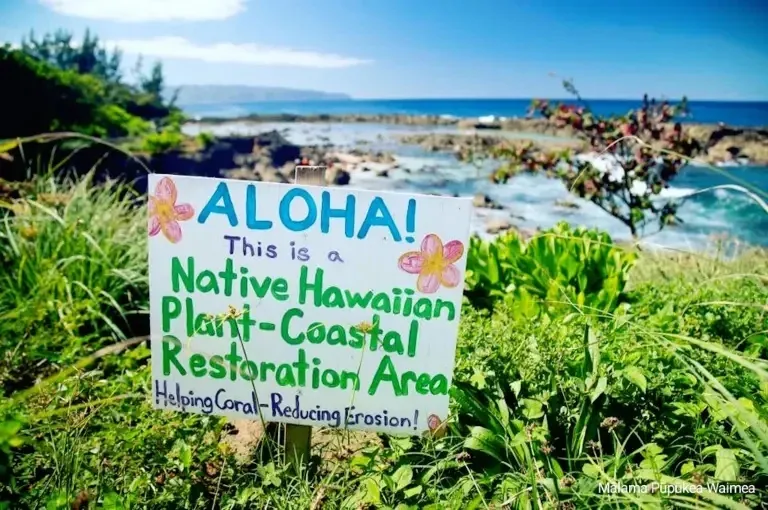Hawaii, the stunning archipelago with endless beaches, turquoise waters, and majestic volcanoes, is not only a world-renowned travel destination but also home to a vibrant and unique ecosystem of flora and fauna. Hawaii’s wildlife sanctuaries play an essential role in preserving these rare species while offering visitors opportunities to fully immerse themselves in the pristine beauty of nature.
From colorful coral reefs to lush tropical rainforests, Hawaii invites travelers to uncover its magical natural wonders and understand the impactful conservation efforts underway. This article explores the most prominent wildlife sanctuaries in Hawaii, where you can witness the marvels of nature and contribute to environmental protection.
Protecting Hawaii’s Coastlines: The Need for “Soft Solutions”
Protecting coastal regions has become increasingly urgent due to population growth and rising sea levels. While “hard” solutions like seawalls may provide immediate defense, they also have detrimental effects on marine ecosystems and wildlife. Research shows that seawalls can reduce biodiversity by up to 23% and marine populations by 45% compared to natural shorelines. In Hawaii, beach loss is often directly linked to seawall construction, causing severe erosion.
Alternatively, “soft solutions,” or “living shorelines,” are being prioritized. This method utilizes natural elements such as native vegetation and sand dunes to mitigate erosion and flooding while creating ideal habitats for marine species. Living shorelines not only defend the environment effectively but are also more cost-efficient to install and maintain compared to hard structures.
If you own coastal property, consider building a living shoreline instead of erecting seawalls. Living shorelines enhance natural beauty while protecting your property sustainably. Even if you’re not living near the coast, you can still support Hawaii’s shoreline conservation efforts by participating in coastal restoration projects, planting native trees, and removing invasive species.

Managing Hawaii’s Coastal Areas with Traditional Methods
Cultural sites of historical significance, often located near the coast, face threats of erosion, putting Hawaiian traditions and heritage at risk. To address these challenges, Native Hawaiians are reviving traditional coastal management practices, focusing on resource preservation and ecological balance.
These methods include the construction of traditional fishponds (loko iʻa), irrigation systems (ʻauwai), and using native plants to stabilize shorelines. By combining ancestral knowledge with modern science, Native Hawaiians are striving to protect coastal areas and ensure sustainable practices for future generations.
Famous Wildlife Sanctuaries to Visit in Hawaii
Hawaii boasts numerous wildlife sanctuaries, each offering its own unique beauty and significance. Here are some of the most celebrated sanctuaries you shouldn’t miss:
- Papahānaumokuākea Marine National Monument: As one of the world’s largest marine protected areas, Papahānaumokuākea safeguards a diverse and extraordinary marine ecosystem, including ancient coral reefs, rare fish species, and endemic seabirds. Visitors can join eco-tours to explore this breathtaking sanctuary.
- Hawai’i Volcanoes National Park: Known for its active volcanoes, this park also provides habitats for unique flora and fauna, including the iconic Hawaiian goose (Nene). Guests can enjoy hiking, camping, and educational programs to learn about the intriguing volcanic ecosystem.
- Kīlauea Point National Wildlife Refuge: Located on Kauai Island, this refuge is home to many rare seabirds, including the Laysan albatross, white-tailed tropicbirds, and red-footed boobies. Visitors can take advantage of coastal observation spots to watch birds and learn about seabird conservation efforts.
- Waipio Valley: While not officially a sanctuary, Waipio Valley is an ecologically significant area featuring verdant rainforests, breathtaking waterfalls, and unspoiled beaches. Explore the valley by hiking, horseback riding, or joining jeep tours to marvel at its untouched beauty.
Experience Eco-Tourism in Hawaii’s Wildlife Sanctuaries
To make your eco-tourism experience meaningful in Hawaii’s wildlife sanctuaries, follow these tips:
- Research ahead of your visit: Familiarize yourself with the sanctuary’s rules, schedules, and permitted activities for proper preparation.
- Stick to designated trails: Avoid wandering into sensitive areas to protect wildlife habitats.
- Keep a safe distance from wildlife: Refrain from feeding animals or getting too close to them, thereby preserving their natural behaviors.
- Leave no trace: Take your trash with you and maintain cleanliness to ensure environmental sustainability.
- Support conservation efforts: Participate in volunteer programs, donate to conservation organizations, or purchase eco-friendly tourism products.
Conclusion
Hawaii’s wildlife sanctuaries are not only inviting tourist destinations but also vital fortresses of biodiversity on this enchanting archipelago. By exploring and respecting nature responsibly, you play a key role in preserving rare species and safeguarding Hawaii’s natural beauty for future generations. Come to Hawaii and experience the wild paradise awaiting your discovery!